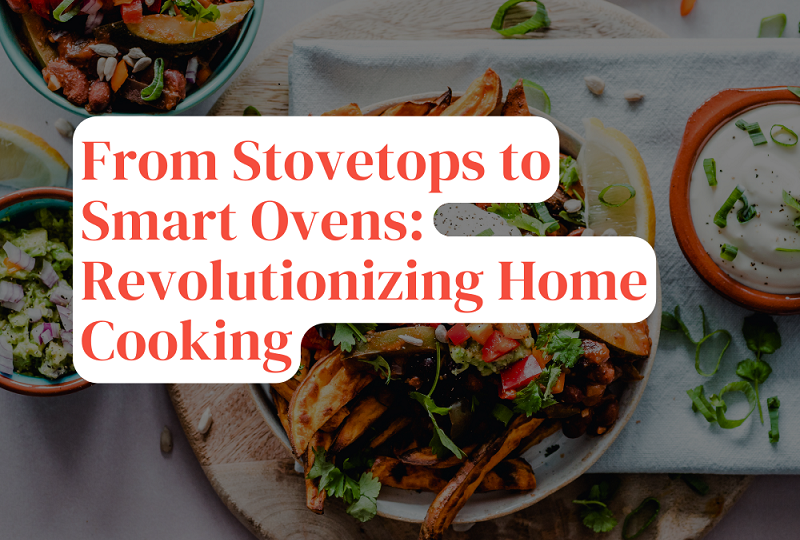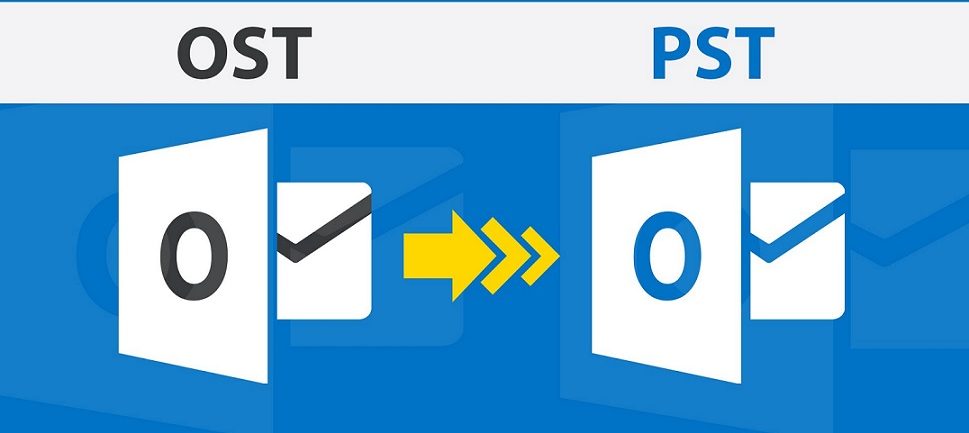The world of kitchen equipment has seen a dramatic metamorphosis recently. The time when appliances only performed their basic duties is long gone. Smart ovens won’t declutter your home on their own, their space-saving features and preheating abilities can free up counter space for a more organized kitchen. They are here to make your life simpler and more easy, and they are smarter than ever today. Welcome to the era of smart kitchen appliances, where culinary expertise and technology converge to make your kitchen a centre of innovation.
Benefits of Smart Kitchen Appliances
Energy Efficiency: Energy-efficient appliances are frequently made with smart technology. They can optimise the timing and temperature of cooking to use less energy, thus saving time and money.
Time-Saving Features: Numerous time-saving functions are included with smart appliances, such as the ability to remotely warm ovens or start your coffee maker from your smartphone.
Remote Control and Monitoring: Imagine being able to control your oven’s cooking settings without getting up from your couch or checking the contents of your refrigerator while you’re out grocery shopping. Smart kitchen equipment has time-saving capabilities that are intended to speed up cooking procedures, shorten preparation times, and improve the convenience of meal preparation. To assist customers, save significant time in the kitchen, these innovations make use of technology and automation.
Ovens and Stoves: You may use a smartphone app to remotely preheat your oven with many smart stoves and ovens. This enables you to begin preheating while you are still travelling home, saving you time when you begin cooking.
Coffee Makers: When you wake up or go home, your coffee will be ready thanks to the ability of smart coffee makers to be configured to start brewing at a certain time.
Slow Cookers: So that your food is ready when you want it, you can remotely control the temperature and cooking duration of your slow cooker.
Recipe Integration
Refrigerators: Based on the ingredients you have within, some smart refrigerators may recommend recipes. Meal planning will take less time with the help of this function, and less food will go to waste.
Cooking Appliances: Integrated recipe libraries are a common feature of smart kitchen appliances. When you choose a recipe, the appliance will automatically determine the proper temperature and cooking time.
Voice Control: Voice assistants like Amazon Alexa and Google Assistant work with a lot of smart kitchen items. To manage culinary settings, set timers, and more, you can use voice commands rather than manually touching buttons or interacting with apps.
Precision Cooking
Sous Vide Machines: You may use a smartphone app to precisely manage the temperature and cooking time on smart sous vide machines. This guarantees that your food will be perfectly prepared without the need for constant supervision.
Induction Cooktops: There is less chance of overcooking or burning your food when using some smart induction cooktops because they include sensors that can maintain a certain temperature consistently.
Multi-Cooking Functions: Multicookers and Instant Pots are examples of smart appliances that provide various cooking options in a single unit. There is no need for different pots and pans because one gadget can sauté, pressure cook, slow cook, and do much more.
Automated Cleaning
Dishwashers: Dishwashers with intelligence can gauge how filthy your dishes are and modify the wash cycle to use less water and time.
Self-Cleaning Ovens: Some smart ovens include self-cleaning settings that burn off food residues at high temperatures, making oven cleaning simple.
Inventory Management
Refrigerators: The contents and expiration dates of a refrigerator can be tracked via smart refrigerators. You can more effectively plan meals when you receive alerts from them when ingredients are running short or when anything is going to expire.
Automatic Shut-Off and Safety Features: Automatic shut-off timers and other safety measures are frequently included with smart appliances. These minimise the chance of mishaps and overcooking by ensuring that appliances are shut off when a cooking cycle is finished.
Customized Cooking Profiles
You can build and preserve customised cooking profiles with some smart appliances. For instance, you may save your preferred cooking or coffee brewing settings, making it simple to regularly duplicate your favourite foods.
Smart kitchen equipment come with time-saving features that are intended to make cooking easier and more convenient. When remodeling your kitchen, consider incorporating a smart oven for features like remote preheating and recipe guidance. They may make meal preparation easier for you, help you use less food, and guarantee that your food is cooked to perfection. These features can greatly improve your cooking experience, regardless of whether you’re a time-constrained professional, a travelling parent, or just someone who values their time.
Energy and Cost Savings
Energy Efficiency: Smart appliances are made to use less energy, which lowers your electricity costs and leaves less of a carbon footprint.
Enhanced Efficiency: You will use less energy and food if you have exact temperature and cooking controls.
Enhanced Cooking and Meal Planning
Recipe Suggestions and Integration: Some smart appliances may even pre-heat the oven to the ideal temperature for you while making recipe suggestions based on the ingredients you already have in your fridge.
Nutrition Tracking: Use equipment that may provide nutritional data to keep track of your dietary consumption and to guide you towards healthier decisions. Users who utilise smart kitchen appliances can benefit from the useful feature of nutrition tracking, which enables them to make better-informed meal decisions. These devices offer customers nutritional information about the materials they use and the foods they cook using technology and data analysis.
Read: Improving Your Digestive System Effectively with Gut Health Secret
1. Ingredient Scanning and Recognition
Some smart appliances, like smart scales and even smart refrigerators, can read barcodes or can identify ingredients by sight. The appliance can now recognise the precise goods you’re using and their nutritional makeup.
2. Nutrient Database Integration
Smart kitchen appliances frequently have access to online databases or are linked to large nutritional databases. The appliance collects information about an ingredient’s calorie, macronutrient (carbohydrate, protein, and fat), vitamin, and mineral content when you enter or scan it.
3. Portion Control
The precise weight of components may be determined using smart scales and portion control tools. They can calculate the nutritional value of the food you’re about to eat when linked with nutritional databases, making it simpler to keep track of your calorie intake and macronutrient balance.
4. Recipe Analysis
A breakdown of the nutritional data for the entire dish can be provided by smart appliances that interact with recipe databases to analyse complete recipes. As a result, you may decide with knowledge what meals to cook.
5. Real-Time Tracking
The nutritional value of your meal can be updated in real-time by some appliances while you cook it. As you add ingredients to a blender for a smoothie, for instance, a connected display may update the nutritional information for you.
6. Customized Dietary Information
Users can enter dietary choices or limitations, such as vegetarian, vegan, gluten-free, or low-carb, for a number of smart appliances. The appliance may then track the nutritional impact of recipes while suggesting recipes or altering existing ones to suit these tastes.
7. Meal Planning and Tracking Apps
Some modern kitchen gadgets communicate with applications for tracking and planning meals that provide more thorough nutritional information. These apps can make it simpler for users to reach their health and fitness goals by assisting them in meal planning and nutrient tracking.
8. Health Recommendations
Based on the nutritional information gathered, some smart appliances can provide health recommendations. For instance, they might suggest calorie-saving substitute items or offer healthier cooking methods. While smart ovens can’t directly improve spinal health, some models offer features like pull-out shelves that can reduce bending for those with back concerns.
9. Integration with Wearable Devices
A more all-encompassing approach to food and wellbeing may be made possible by some smart kitchen gadgets’ ability to connect to wearable fitness trackers and health monitors. You may learn more about how your food affects your overall fitness and health with this integration.
10. Allergy and Sensitivity Alerts
– By having their smart appliances recognise and alert them to any components they could be allergic or sensitive to, users can avoid potential health risks.
11. Long-Term Tracking and Trends
Customers can gain insights into their long-term dietary patterns and trends via smart appliances that continuously record nutritional data, enabling them to change their eating habits while on the go. Utilising smart kitchen gadgets with nutrition tracking helps users better manage their dietary goals, make healthier food selections, and understand the nutritional content of their meals. Whether you’re trying to lose weight, manage a specific dietary issue, or simply want to make better food choices, these gadgets can be very helpful in supporting your nutritional goals.
Selecting the right smart kitchen appliances involves several considerations:
Cooking Habits and Needs: Take into account the size of your household, your preferred method of cooking, and the dishes you usually make.
Compatibility: Make sure the appliances you choose are compatible with the ecosystem of your smart home.
Budget: Establish a budget and look at possibilities that go within it because smart appliances can be an investment.
Energy Efficiency: To lessen your impact on the environment and save money on power costs, look for Energy Star ratings.
User-Friendly Interfaces: For ease of use, choose appliances with simple user interfaces and mobile app integration.
Common Concerns and Misconceptions
Privacy and Security Concerns
Recognise the data that your appliances gather and transmit.
Use security precautions like software updates and secure passwords.
Learning Curve and Technical Issues
Although there will be a learning curve, don’t let it discourage you—the majority of appliances are made to be user-friendly.
For technical concerns, speak with customer service or ask a friend who is tech skilled for assistance.
Maintenance and Repair Costs
When buying smart appliances, consider the cost of maintenance and look over the warranties.
Your devices’ lifespan can be increased with routine maintenance.
The Future of Smart Kitchen Appliances
The world of smart kitchen appliances continues to evolve rapidly, with exciting developments on the horizon:
Emerging Technologies and Trends
Artificial Intelligence and Machine Learning: Appliances will become even better at understanding your preferences and suggesting recipes.
Voice Recognition and Natural Language Processing: Interact with your appliances using natural language commands.
IoT Integration and Smart Home Ecosystems: Appliances will work seamlessly with other smart devices in your home.
Potential Challenges and Opportunities
addressing issues with privacy while boosting security.
integrating renewable energy sources with appliances to create a greener kitchen.
Real-Life Testimonials
Learn from people who have incorporated smart kitchen gadgets into their daily lives. As they discuss how these appliances have altered the way they cook and manage their kitchens, learn from their achievements and difficulties. The smart kitchen appliance of the future is already here. Convenience, efficiency, and limitless opportunities for culinary innovation are all provided by smart kitchen appliances. Your kitchen will become an even more fascinating area to experiment and invent as technology continues to advance. Explore your alternatives, embrace the smart kitchen revolution, and observe how your culinary experiences change.
Author’s Bio:
Purushottam is an accomplished Content Head at Emergen Research, where he spearheads the creation of insightful and engaging content in the dynamic realm of technology.










